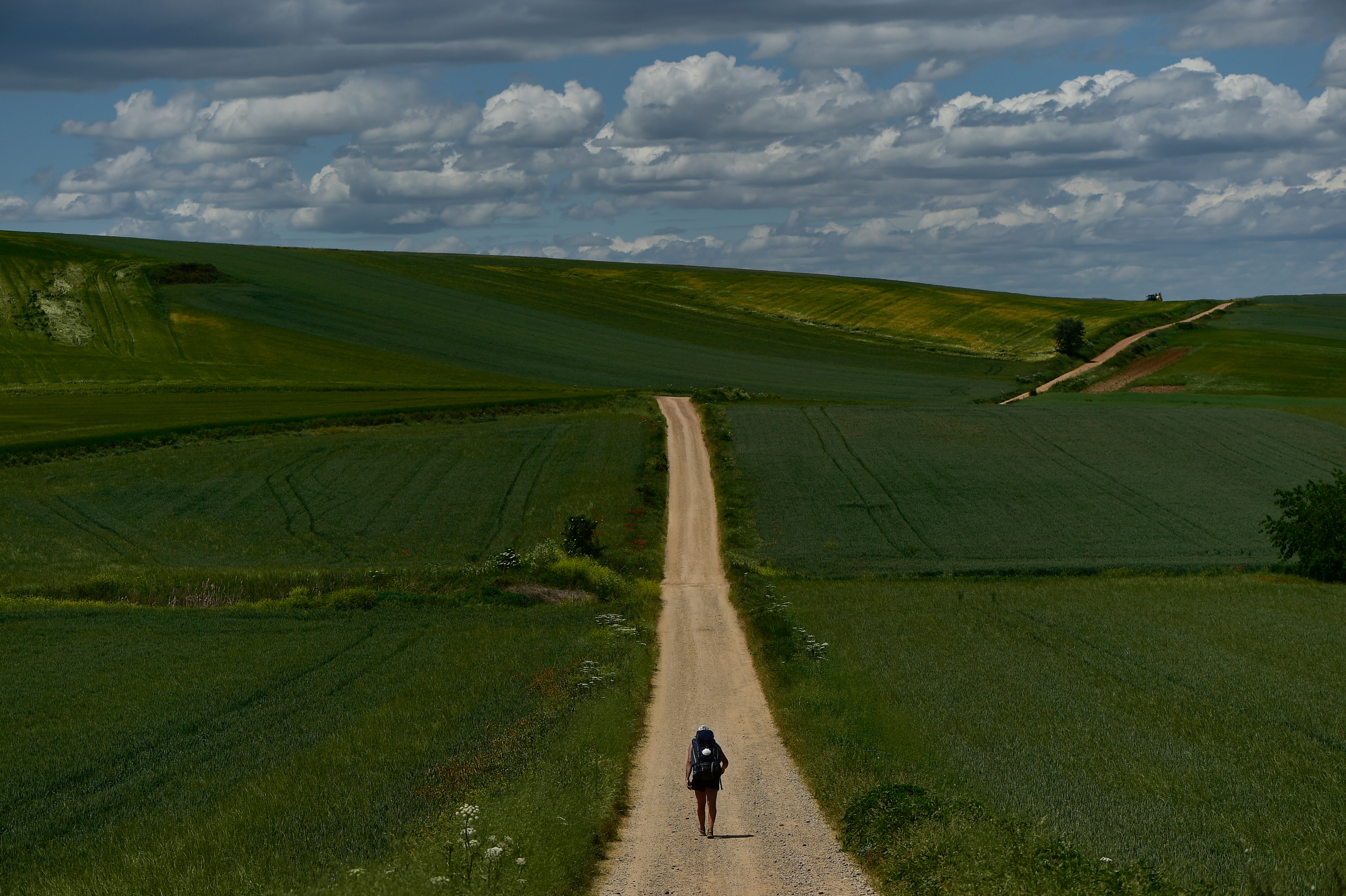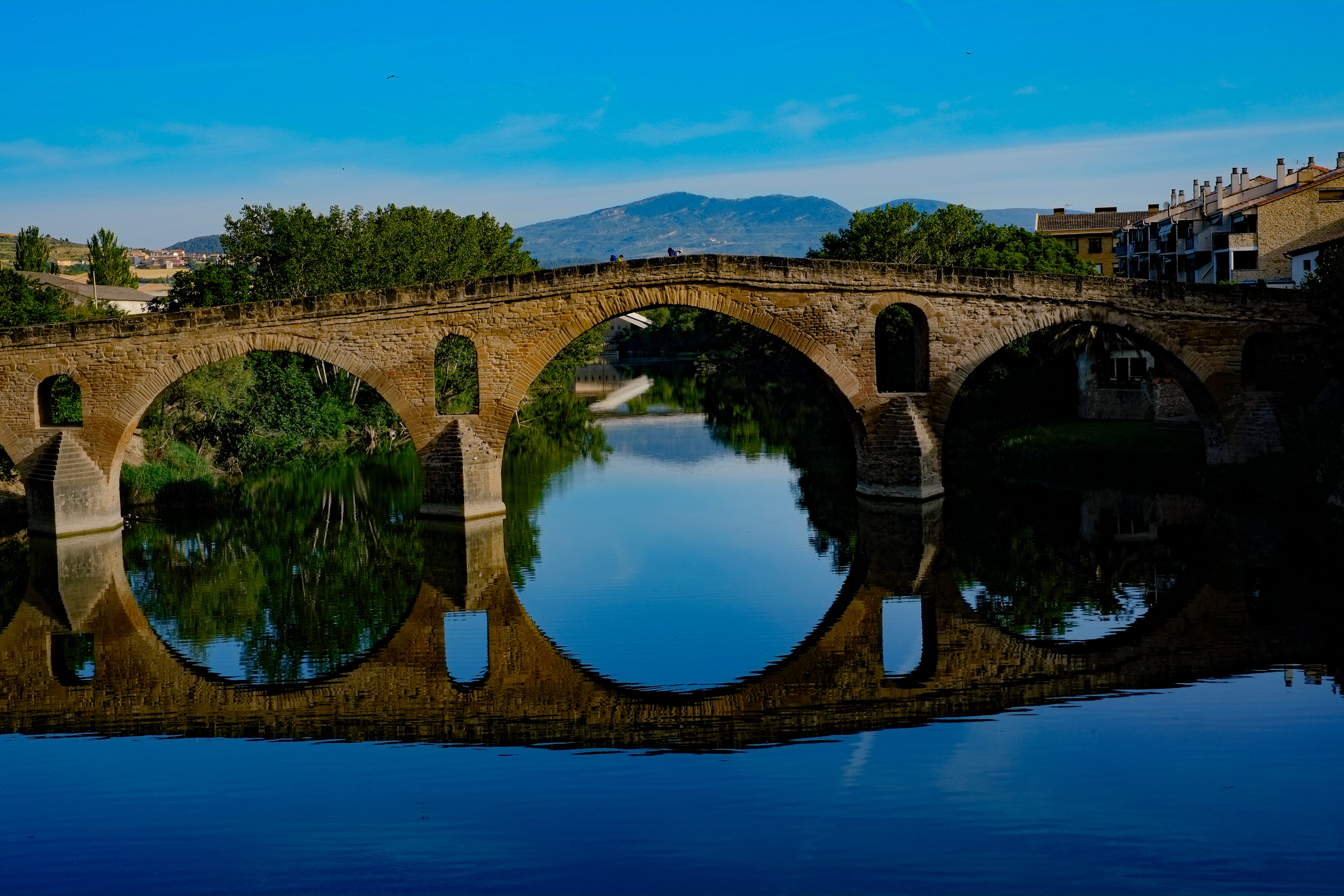Camino de Santiago: The world’s most famous hiking trail is experiencing a new boom in spiritual tourism

Rachael Sanborn was in a bad relationship and dreamed of escaping to the Camino de Santiago in Spain, a pilgrimage her father had made that had fundamentally changed his life.
A rebel and adventurer by nature (she dropped out of college to meditate in India for a year), Sanborn quit her job, gave up her health insurance, and pooled her savings to walk the Camino for two months. On the third day of her walk, she promised herself she would return every year. Nine months later, she was back, leading her first group of eight pilgrims.
A decade later, now 45 and living in the Bay Area, she leads grief walks and walking meditations on the Camino with the travel company she founded, Red Monkey Walking Travel. The red monkey is a reference to Hanuman, the Hindu god of joyful service. Raised Tibetan Buddhist, Christian and Jewish, Sanborn considers herself all three. She believes everyone can find a way to make the Camino work for their religion.
“We had everyone from devout Catholics to atheist Chinese,” Sanborn said. “The Camino has always been open to all people of all religions for the last 1,000 years. Some of my first Camino friends were from Iran. Iran! And they stopped in or outside every closed church and read Rumi poems.”
Sanborn represents a growing trend of non-Catholic — even non-Christian — pilgrims venturing on the Camino. In 2023, nearly half a million people walked the Camino de Santiago in Spain. About 40 percent of them walked for purely religious reasons, according to statistics from the Pilgrims’ Office. While it is traditionally a Catholic pilgrimage that ends at the shrine of the Apostle James in the Cathedral of Santiago de Compostela, secular pilgrims today embark on the Camino for all sorts of reasons beyond religion: health, grief, transition, cultural exploration, history and adventure.

Sharon Hewitt from St. John’s in Newfoundland, Canada, walked part of the Camino with two friends in the fall of 2016. Her motivation was to spend time with friends and have a “meaningful” vacation. Hewitt does not consider herself religious, but recognized a kind of devotion in the rituals and challenges of the eight-day hike.
“I didn’t do it for religious reasons, but there are overlaps,” says Hewitt. “Religion has a lot to do with discipline, just like the Camino. After a hard night, you still get up and keep going.”
This synthesis of religious and secular motivations is of great importance to people like Nancy Mead, president of the ecumenical organization The Friends of the Anglican Centre in Santiago de Compostela. Mead, an Episcopalian living in Rhode Island, says there are as many reasons why people walk the Camino as there are people who walk it. While the Camino is a religious experience for her, she has also learned life lessons along the way that apply to everyone, religious or not. She has walked seven different routes of the Camino and has to remind herself each time to lighten her pack; makeup and extra clothes just add weight to the journey.
The number of “spiritual but not religious” pilgrims on the Camino has increased over the past two decades, with population growth and the emergence of “secular spirituality.” Jacqui Frost, whose research at Purdue University focuses on the health and well-being of the nonreligious, says researchers are increasingly using the language of spirituality to talk about secular experiences in which one feels connected to something larger than oneself – something she says often occurs in nature.
“We have begun to secularize many of the rituals that were once religious,” Frost said. “Think of meditation, yoga, or even atheist churches. Many people are interested in rituals and find meaning in these communal events.”
As this growing spiritual but non-religious group adopts religious rituals and beliefs, the question is how this can happen without appropriating them. Many of the reasons non-religious people walk the Camino are similar to those of religious people. In a 2019 study in the journal Sociology of Religion, researchers examined the motivations of atheists and religious pilgrims for walking the Camino and found an overwhelming overlap in motivations; most were seeking a connection to nature and their deeper self. The only two indicators that differed were community and religious motivations, both of which were higher among religious pilgrims.
Liz Bucar, an expert in religious ethics and author of the forthcoming book The Religion Factor: How Restoring Religion to Our Spirituality Makes It More Meaningful, Responsible and Effective, says the growing number of spiritual but non-religious pilgrims demonstrates a need for meaning even if one has rejected religion. But she doesn’t think it’s as simple as just leaving out the religious part, and isn’t sure the same benefits can be achieved without it.
“If you want to experience the true essence of a pilgrimage, you have to engage with the religion,” says Bucar. “Spirituality is what they call the parts of religion that they like. Religion is part of the secret sauce.”
After all, says Bucar, pilgrimage is spiritual tourism. She now describes the Camino as a “curated, socially constructed experience with institutions involved.” Bucar used to lead college students on the Camino, but came to believe that the journey fed the idea that you can achieve this spiritual connection or transcendence by participating in a temporary experience. She says the Camino falls into that category, which is also what her new book is about, namely the category of those spiritual tricks and shortcuts that people take when they “don’t want to practice religion.”
Bucar required students to write an application essay for the course, and most cited a desire for a transformative experience as their reason for wanting to walk the Camino. “They’re looking for a quick fix, an experience that will change their lives,” she said.

She has no objection to taking students back. But she would do it differently. Instead of focusing on the inner journey, she would encourage her students to study the historical context of the routes and the controversial parts of history that the official Spanish guidebooks might leave out. After all, Saint James is also known as Santiago Matamoros, the “Moor Slayer.” The story of how Matamoros helped Charlemagne murder Muslims is not something you will hear from a guidebook. She would focus on the construction of historical narratives.
“I would make it less entertaining and less of an ‘experience’ for them. It’s much more valuable when those experiences are uncomfortable and disorienting,” Bucar said. “You have to deal with the religion behind it.”
For Sanborn, Christianity will always remain at the heart of the Camino – even for those who bring a different religion or no religion at all on their pilgrimage. However, she agrees with Bucar that Christianity on the Camino has not always been pretty.
“I think it’s important to honor the Christianity of the Camino and to appreciate the traditions and amazing art and architecture of the Camino. But the Camino also passes through the sites where over 80 people were abducted from their mountain homes and the town where they were burned at the stake. So I think it’s important to see the best and the worst of the religion,” Sanborn said. “Every time I walk into a church or cathedral on a hot day, it’s impossible not to be impressed.”
However, Sanborn disputes the notion that non-Catholic pilgrims – “sometimes referred to as pilgrim tourists” – do not have the opportunity to experience what the Camino has to offer.
“Everyone I’ve met on the Camino gets more than they bargained for, so it’s probably best not to judge,” she said. “The Camino is so special in ways I don’t pretend to understand, and that’s part of the great mystery of life. It’s magic.”




